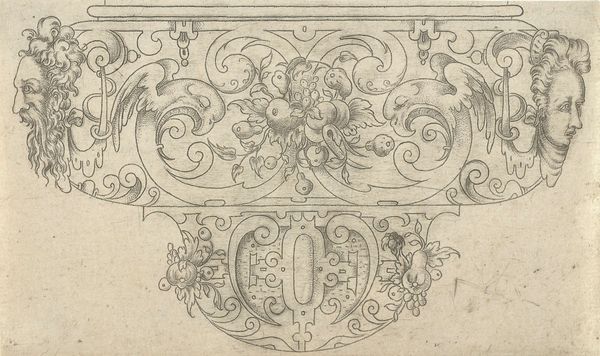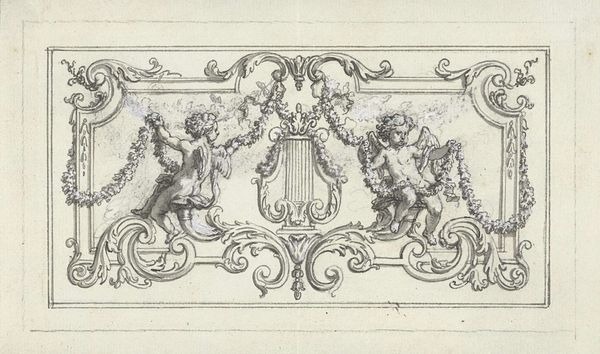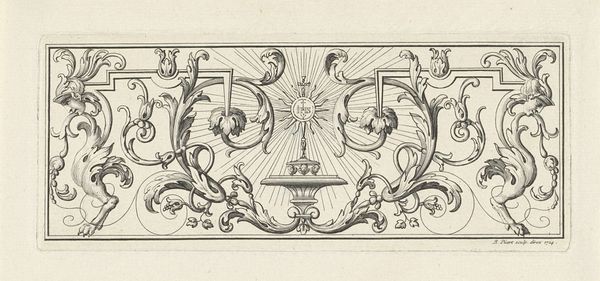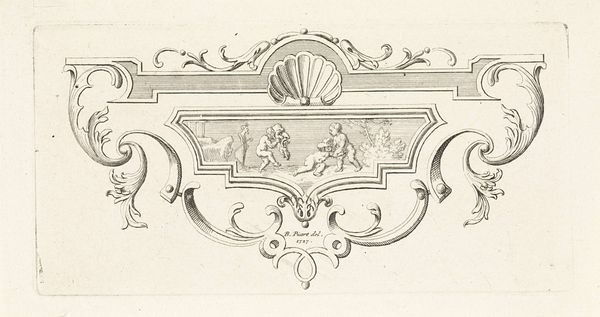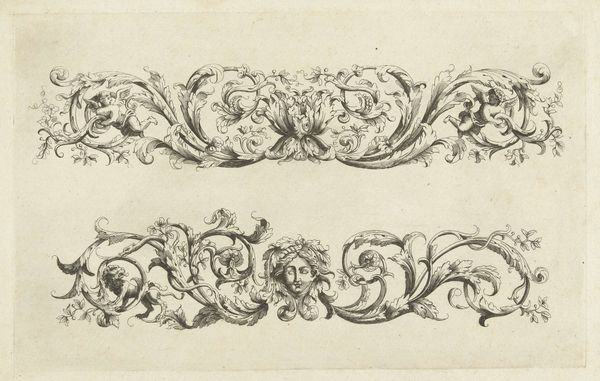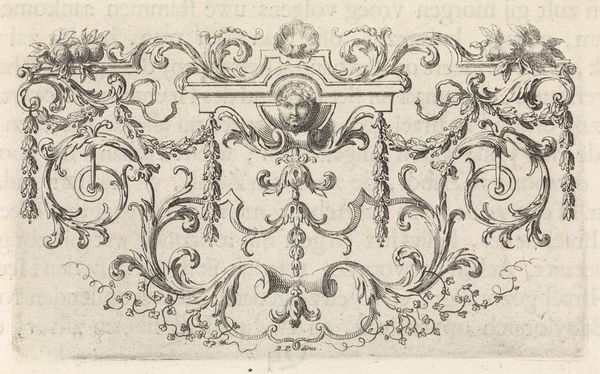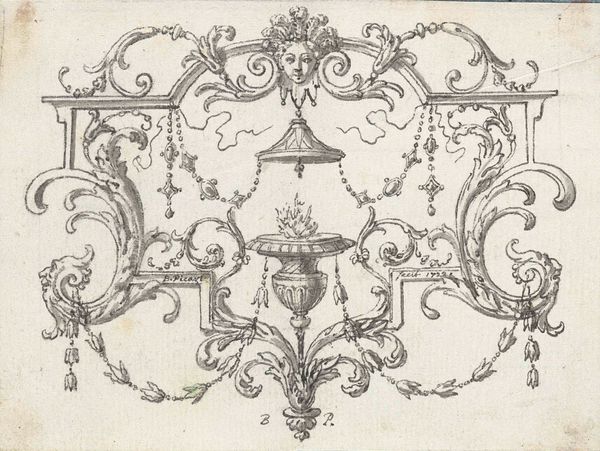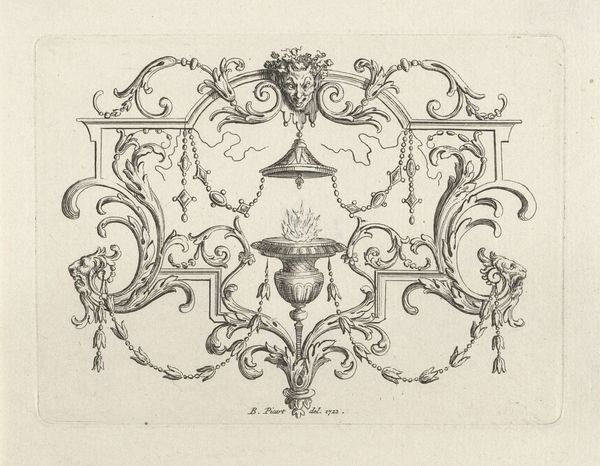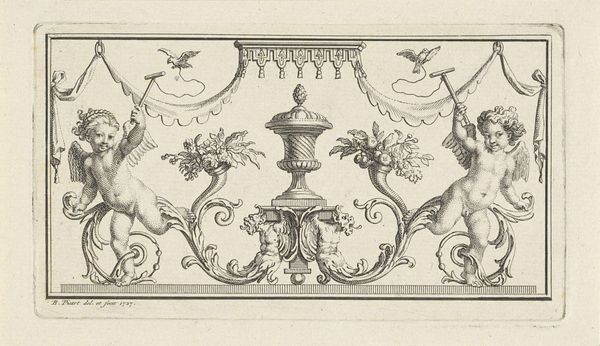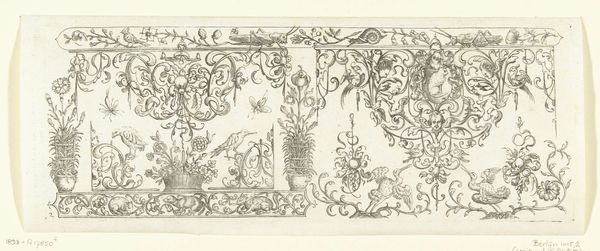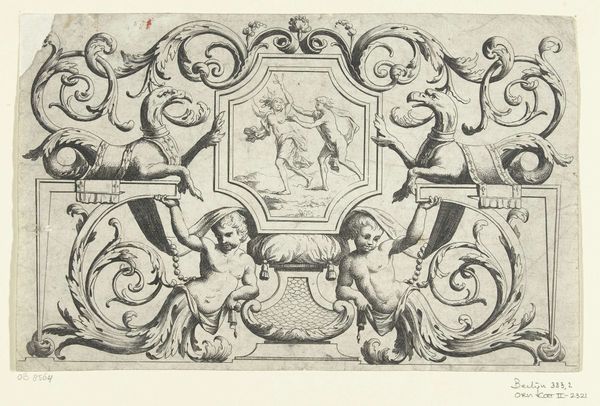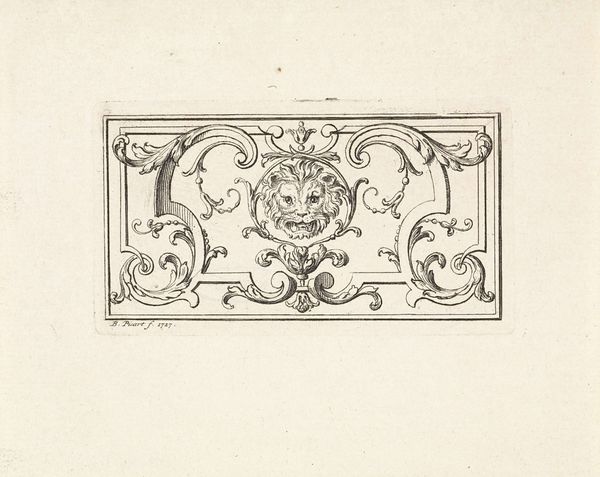
drawing, ink, pen
#
drawing
#
allegory
#
baroque
#
figuration
#
ink
#
pen
#
genre-painting
Dimensions: height 91 mm, width 155 mm
Copyright: Rijks Museum: Open Domain
Editor: This is a pen and ink drawing entitled "Panel Filling with Putti Carrying Killed Hares," created between 1683 and 1733 by Bernard Picart. It feels like a decorative sketch for a larger architectural element, almost like something you'd find on a baroque building. The putti are quite whimsical, but the dead hares introduce a somewhat somber note. What do you see when you look at it? Curator: The composition immediately strikes me. Note the rigid symmetry. The architectural framework, complete with sphinxes atop the pillars, firmly contains the lively, almost chaotic, baroque embellishments within. Then consider the weight these central putti, or cherubs, exert. Do you observe how they are weighted down? Editor: You mean literally? With the hares? Curator: Precisely. Picart cleverly uses the weight of the hares, held between them with some effort, to visually ground what would otherwise be a frivolous display. Notice, too, the delicate rendering of the foliage, contrasted against the bold lines of the architectural elements. It's a masterful balancing act. It offers this contrast: architectural structure versus natural exuberance and life weighed down by reality. Editor: That's fascinating! I hadn't considered the relationship between the putti and the weight they’re carrying. So, it’s not just decorative, it’s saying something about, perhaps, the burdens of innocence? Curator: Indeed. Or perhaps a meditation on the ephemeral nature of beauty and pleasure, contrasted with the solid, enduring nature of structure. But interpretations are always open, of course. It's the formal tension that interests me most. Editor: That makes me appreciate how carefully crafted it is. I thought it was just pretty. Thank you. Curator: A pleasure. It's pieces like this that remind us how even the smallest sketches can contain volumes.
Comments
No comments
Be the first to comment and join the conversation on the ultimate creative platform.
